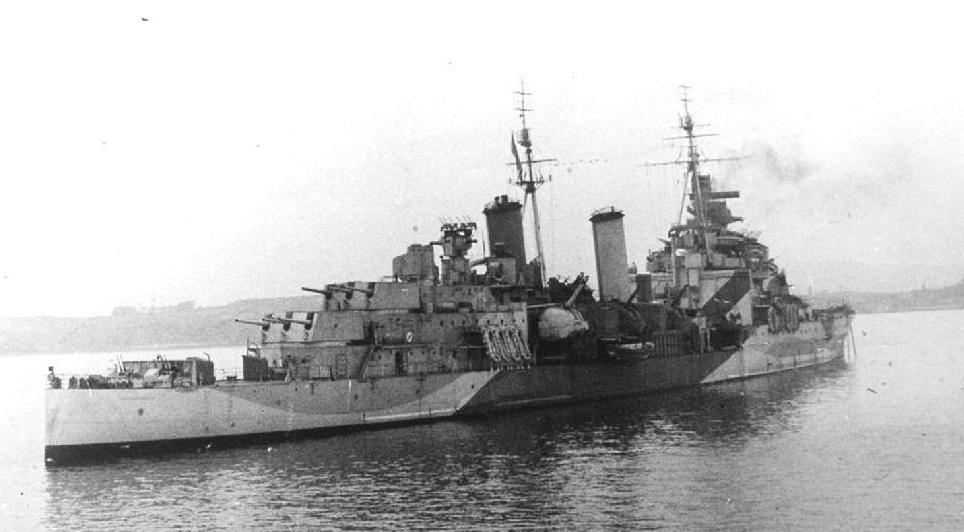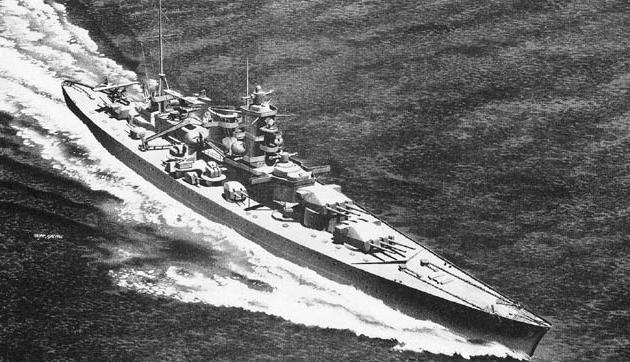
7 minute read
Memory of a Christmas Past
Memory of a Christmas Past
Advertisement
The following first-hand account was given to Mike and Tess Bowen almost 40 years ago by their friend and neighbour, Reg Dean, a retired WW2 era Royal Navy officer.
‘It was the approach of another Christmas and a telephone conversation with my daughter which led my thoughts back to a Christmas 36 years ago. She had recently taken some pupils to see the warship HMS Belfast anchored in the river Thames near Tower Bridge, and she was ‘rather tickled’ to see my signature as officer of the watch on an old entry in the ship’s log dated 26th December 1943.
Early in the morning of that day began the last act of a drama which reached its awful climax at 7:45 pm that night. Surrounded by warships of the British Home Fleet and pin pointed by their radar scanners, the German battlecruiser Scharnhorst was battered by gun and torpedo fire until she became visible in the Arctic night as a dull red glow and finally sank beneath the icy waves with almost all of her 1800 crew.
On Christmas night, cruising at 17 knots in line abreast, in stormy Arctic seas west of Bear Island, was the British 10th Cruiser Squadron under Admiral Burnett in HMS Belfast together with HMS Norfolk and HMS Sheffield. Some 200 miles to the east, a convoy of 18 heavily laden merchant ships closely escorted by destroyers and minesweepers, was heading towards Northern Russia at 8 knots with valuable war equipment for the Russian forces. In heavy seas, few of the off-watch crew in Belfast were sleeping when, in the early hours of Boxing Day morning, a voice came over the intercom, “This is the Captain speaking.” There was a hush of expectation on all decks. “We have just received news from Norway that the German battlecruiser Scharnhorst has sailed from Altenfiord, apparently on a course to intercept and attack the convoy.” For most of us this heralded the prospect of our first engagement with the enemy. All hearts beat a little faster. Belfast gave a shudder and a deep rumble indicating that she was increasing speed. Swinging to port she set a course to put the cruisers between the enemy force and the convoy.
350 miles away to the west, the Commander in Chief Admiral Fraser, in the battleship Duke of York, with the cruiser Jamaica and four destroyers, also received the message from Norway and immediately set course eastwards towards the convoy. The relative positions caused Admiral Fraser some doubt as to whether he could intercept the German force in time. Huge waves whipped up by a force 8 gale from the south west put the destroyers in danger of broaching to and at times the battleship seemed partially submerged like a huge submarine as she tried to maintain a speed of 24 knots. In desperation, he decided to risk detection and break radio silence. He radioed the convoy to alter course to the north. A U boat shadowing the convoy reported the alteration of the convoy’s course to the Scharnhorst. She altered course accordingly and flashed a signal to her destroyers but in the foul weather conditions they never received it. Through this error, Scharnhorst lost her escort and never regained it.

HMS Belfast
Around 8:30 am, the 10th Cruiser Squadron with all radar sets eagerly scanning the Arctic gloom picked up the echo of a large ship 20 miles to the south. When the range closed to around 7 miles it became clear from its great size that the target was the Scharnhorst and all three cruisers opened fire with their main armament. Scharnhorst promptly turned away firing a few ineffectual salvoes from her rear turret. Admiral Burnett decided not to chase her but to turn back towards the convoy. In fact Scharnhorst, moving at high speed then circled out of range opting to attack the convoy from a different direction. Three hours later, when the cruisers were in close company with the convoy, their radar again detected a large ship approaching from the north east. Belfast fired star shells towards the radar echo and illuminated the approaching German battlecruiser. The three cruisers turned to line ahead bringing all guns to bear on the starboard beam and broadsides crashed out with a deafening roar. Norfolk unfortunately was not equipped with fleshless cordite and the German gunners were able to range accurately on to the flashes from her 8 inch guns. Norfolk was soon hit by several of Scharnhorst’s 11 inch shells and X turret was put out of action. The battle lasted nearly an hour with Norfolk receiving most of Scharnhorst’s fire but leaving the convoy undamaged.
Suddenly the Scharnhorst broke off the action and turned south acting, as we learned later, under orders from Hitler not to risk serious damage to the battlecruiser. I recall the hasty conference between Admiral Burnett and Captain Parham which immediately followed on the bridge of HMS Belfast. It was decided to leave the convoy and give chase.

The German Battlecruiser Scharnhorst
There followed a grim struggle to keep contact with the Scharnhorst whose 160,000 horse power engines were sending her crashing through the heavy seas at 30 knots. Norfolk was forced to drop back to fight fires on board. Sheffield, using full power to keep up, eventually stripped one of her propeller shaft bearings and she too dropped behind. For a while Belfast fired salvoes from her forward turrets but although the engine room used her 80,000 horse power to the limit, she could not better 28 knots and was soon out of gun range and taking severe damage from huge waves which smashed her boats and guard rails. Our hopes then relied on the battleship Duke of York which, unknown to the Scharnhorst, was approaching at maximum possible speed from the west. The atmosphere in Belfast’s Operations room was extremely tense as the tracks of the three ships were plotted showing at one time that Duke of York might fail to intercept. Scharnhorst was no longer visible from the bridge of Belfast but was held in radar contact at a range which was relentlessly increasing towards the radar set’s limit of around 20 miles as Scharnhorst continued to smash her way through the waves at a higher speed. At intervals, Belfast radioed the position, course and speed of Scharnhorst. Duke of York and her accompanying destroyers picked up the messages and adjusted their interception course accordingly. At 4 pm with intense relief, we detected the Duke of York ideally placed to cut off the Scharnhorst’s retreat. At the same time the Duke of York’s radar pinpointed the enemy target and her armament of ten 14-inch and 16 5.25-inch guns came to the ready.
The final battle began when the Duke of York hidden in pitch darkness illuminated Scharnhorst with star shells. Then turning beam on, the Duke of York released a broadside of 14-inch shells at 7 miles range. This was the first indication to the crew of Scharnhorst that a heavy warships was near and one can image the shock and apprehension that ran through the ship. The British warships then turned bows on the enemy to comb the tracks of any torpedoes Scharnhorst might well have fired blind into the night in retaliation. Belfast then began firing at extreme range from forward turrets. Duke of York scored several hits and Scharnhorst turned south west. At full speed she began to draw away with all her undamaged turrets firing but she was being repeatedly hit. Moving in at 33 knots destroyers launched an effective torpedo attack which reduced Scharnhorst’s speed to 20 knots. Later, her erratic movements indicated that her steering was damaged and gradually she came almost to a standstill. For nearly three hours Scharnhorst was steadily hit by shells and torpedoes. Her return gunfire grew less and less. Her radio message addressed to Hitler was overheard, “We shall fight to our last shell.” At 7:45 pm when Scharnhorst had ceased firing, Belfast received the order from Admiral Fraser, “Finish her off with torpedoes.” Belfast fired a salvo of star shells and steamed in on the last radar bearing, torpedo tubes loaded but the great battlecruiser, 770 feet in length and 39,000 tons in weight, had disappeared leaving a mass of smoking oil, debris and bodies. At once our destroyers moved in with search lights piercing the darkness to pick up the very few survivors.

Lt Dean RNVR front row far right.
Then the deafening gunfire still ringing in our ears began to fade and there was a deathly silence all around Belfast, even the wind and sea seemed hushed. Then the satisfaction of a victory in a just war became tempered with sadness at the destruction of a beautiful warship but above all there came to many an agony born of the brotherhood which all sailors feel for each other in times of disaster. Not a few eyes were moist with emotion as pictures came fully to mind of the hell in which almost all her 1800 crew must have perished. Not a few prayed then to God for a speedy end to the war and, fervently, that never again might man be obliged to turn to such brutal killing to settle disputes.’
Commander Reginald Dean RN




